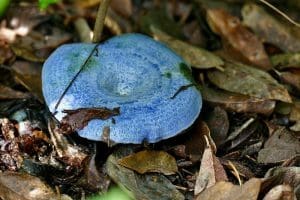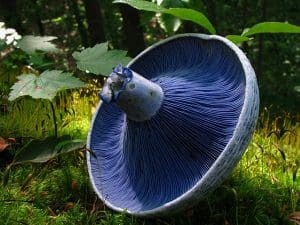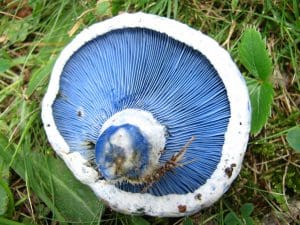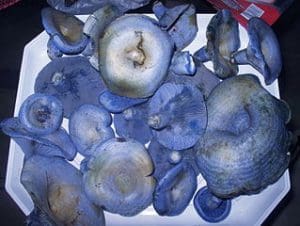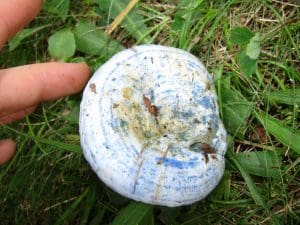Indigo Milkcap / Summer / Autumn / Edible
Through this Indigo Milkcap (Lactarius indigo) Identification guide we will be taking a look at a very distinct member of the Milkcap family, quite rare but a lovely find.
Scientific Name
Lactarius indigo
Common Names
Indigo Milkcap, Blue milkcap, Candy cap
Family
Russulaceae
Habitat
They can be found in deciduous and evergreen forests, they form mycorrhizal relationships with many different tree species.
Description
A fairly easy-to-identify mushroom, the blue caps and blue milk make it quite distinctive.
Identifying Features to help with Indigo Milkcap (Lactarius indigo) Identification:
Cap:
Blue to silver in colour, around 5-15 cm across. They are convex when young and tend to become more funnel shaped with age, often with a raised central umbo. They can fade slightly but the central umbo tends to remain darker in colour.

Stem:
They can be up to 6 cm long, a similar colour to the cap. The stem is solid when young but often becomes hollow with age.
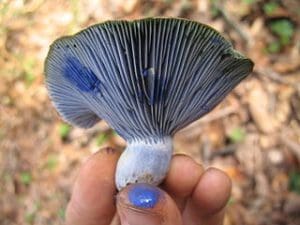
Gills:
The gills are a similar colour to the cap and often stain green/blue when they are damaged. The gills are fairly crowded and are adnate to slightly decurrent. When damaged they release a deep blue or indigo milk that will become dark green with age, the milk is mild tasting.

Smell:
No strong aroma.
Spores:
Yellow.
Uses
In food
A tasty mushroom with a lovely firm texture. They lose their blue colour when cooked.
The milk is sometimes used to add colour to marinades and they are sold commercially in many parts of the world, for example South America and China.
Known hazards
None known.
Potential lookalikes
Other Milk Caps, but with the blue, mild tasting milk they are fairly easy to ID.



